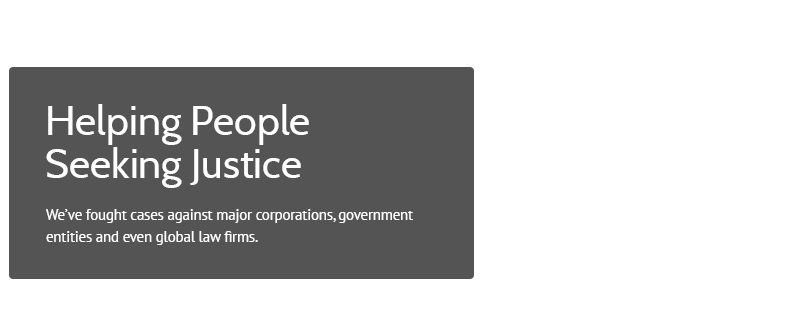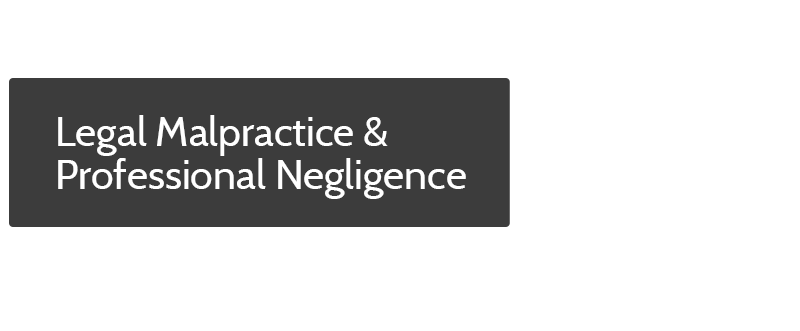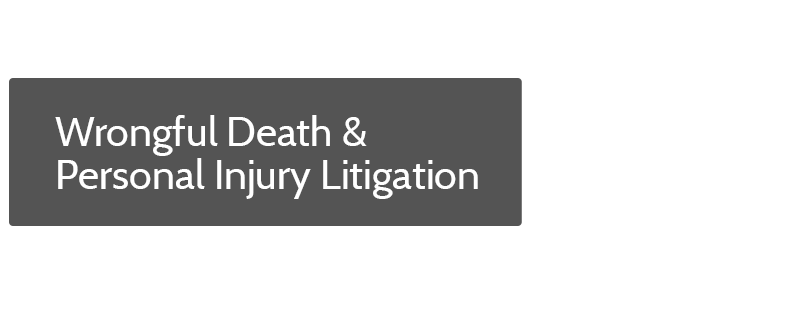The “But For” Test for Causation in Legal Malpractice
WHAT IS THE “BUT FOR” TEST?
The “But for” test is one of the two legal standards for proving causation in legal malpractice cases.
This test requires the plaintiff to prove the defendant attorney’s negligent actions (or advice) actually caused the plaintiff to suffer damages or harm. Essentially, the plaintiff uses the facts of the case to prove that “but for” the lawyer’s negligence, (s)he would not have suffered the relevant damages. As long as the evidence demonstrates that the attorney’s conduct was an actual cause of the plaintiff’s damages, the attorney’s actions do not necessarily have to be the only cause of the damages.
In malpractice actions arising from litigation, the “but for” test normally involves the plaintiff attempting to prove that the attorney’s negligence resulted in the plaintiff receiving a less favorable (or smaller) settlement or judgment than the plaintiff would have received had the attorney not acted wrongfully.
The critical analysis, and question, is what would have happened to the plaintiff if the attorney had not engaged in wrongful, negligent action. The plaintiff need not prove this with absolute certainty, but must meet the relevant standards to meet the requirements for establishing a prima facie case for attorney negligence.
THE PLAINTIFF BEARS THE INITIAL BURDEN OF PROVING CAUSATION
In most cases, the plaintiff must introduce evidence proving that “but for” the attorney’s wrongful conduct, the plaintiff would have:
— Won, or recovered more damages in, the original action in which the defendant attorney’s allegedly wrongful conduct occurred. (Note: when claiming higher damages amounts, the plaintiff must also demonstrate that (s)he could have collected the higher amount from the defendant.)
— Settled the underlying action on terms more favorable to the plaintiff than the terms upon which the matter was actually settled.
— Obtained more favorable contract terms than were obtained as a result of the attorney’s wrongful conduct.
— Any other form of legally-recognized proof that establishes the plaintiff suffered recognizable damages as a result of the defendant attorney’s wrongful actions.
THE DEFENDANT LAWYER’S FAILURE TO PRESERVE EVIDENCE MAY SHIFT THE BURDEN OF PROOF
Where the defendant lawyer’s negligent destruction of evidence or failure to preserve important evidence forms the foundation of the legal malpractice action, the defendant attorney may be obligated to prove that his or her conduct was not the cause of the plaintiff’s damages. This is because the attorney’s alleged (or actual) destruction of evidence may render it impossible for the plaintiff to prove causation. In such cases, the law would rather provide a remedy for the injured plaintiff than allow the attorney to potentially benefit from his or her own malpractice. However, the plaintiff must still prove a “substantial probability” of causation before the burden will shift to the defendant attorney.
***
Disclaimer: THIS ARTICLE IS FOR INFORMATIONAL PURPOSES ONLY, AND DOES NOT CONSTITUTE LEGAL ADVICE OR CREATE AN ATTORNEY-CLIENT RELATIONSHIP BETWEEN THE AUTHOR AND ANY PERSON. Your rights and experiences may vary. Never use an online article (including this one) to evaluate your legal claims. Speak with an experienced lawyer promptly to obtain a personalized evaluation of your claims, possible damages, and options. You may lose or compromise your rights if you delay in consulting legal counsel. Legal claims against lawyers or other third parties are a complicated topic. If you believe you have a claim against an attorney who failed to provide you with competent representation, or any other type of legal claim, consult an experienced lawyer immediately for an evaluation of your possible rights and claims.














